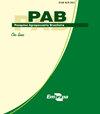Drying of butiá pulp by the foam-layer method and characterization of the obtained powder
IF 0.7
4区 农林科学
Q3 AGRICULTURE, MULTIDISCIPLINARY
引用次数: 1
Abstract
Abstract The objective of this work was to develop a drying process using the foam-layer method to obtain the powder from butiá (Butia spp.) pulp, as well as to characterize this powder according to its yield and physicochemical and technological characteristics. The foam was optimized for density and stability by varying whipping times and albumin and xanthan gum concentrations. Foam drying was optimized for vitamin C retention and yield using different foam thicknesses and drying temperatures. The optimized foam showed a density of 0.25 g cm-3 and a high stability, being suitable for subsequent drying. The lowest foam thickness (0.50 cm) and the highest drying temperature (80°C) resulted in the highest retention of vitamin C, whereas the increase in drying temperature improved yield. The butiá pulp powder obtained under the optimized condition presented an acid pH of 3.25, a low humidity of 7.97%, a water activity of 0.206, a water retention capacity of 4.90 g H2O per gram of powder, a solubility of 74.40%, a soluble solids content of 61°Brix, and a predominantly yellow color. The foam-layer drying method can be used to obtain butiá pulp powder.泡沫层法对丁铁纸浆的干燥及所得粉体的表征
摘要:本研究的目的是开发一种泡沫层干燥法从丁铁 (Butia spp.)纸浆中获得粉末的工艺,并根据其产率、理化特性和工艺特性对该粉末进行表征。通过不同的搅拌时间、白蛋白和黄原胶浓度来优化泡沫的密度和稳定性。在不同的泡沫厚度和干燥温度下,优化了泡沫干燥对维生素C保留率和产率的影响。优化后的泡沫密度为0.25 g cm-3,稳定性高,适合后续干燥。在最低泡沫厚度(0.50 cm)和最高干燥温度(80℃)下,维生素C的保留率最高,干燥温度的升高可提高产量。在优化条件下制得的丁铁浆粉末酸pH值为3.25,低湿度为7.97%,水活度为0.206,保水容量为4.90 g H2O / g,溶解度为74.40%,可溶性固形物含量为61°Brix,颜色以黄色为主。泡沫层干燥法可获得浆粉。
本文章由计算机程序翻译,如有差异,请以英文原文为准。
求助全文
约1分钟内获得全文
求助全文
来源期刊

Pesquisa Agropecuaria Brasileira
农林科学-农业综合
CiteScore
1.20
自引率
0.00%
发文量
45
审稿时长
9-18 weeks
期刊介绍:
Pesquisa Agropecuária Brasileira – PAB – is issued monthly by Empresa Brasileira de Pesquisa Agropecuária – EMBRAPA, affiliated to Ministry of Agriculture, Livestock and Food Supply. PAB publishes original scientific-technological articles on Plant Physiology, Plant Pathology, Crop Science, Genetics, Soil Science, Food Technology and Animal Science.
Its abbreviated title is Pesq. agropec. bras., and it should be used in bibliographies, footnotes, references and bibliographic strips.
 求助内容:
求助内容: 应助结果提醒方式:
应助结果提醒方式:


